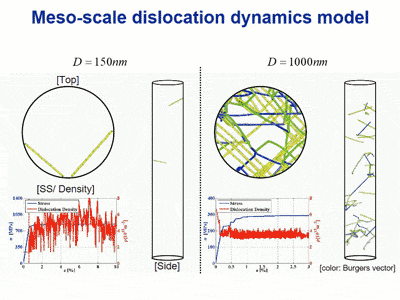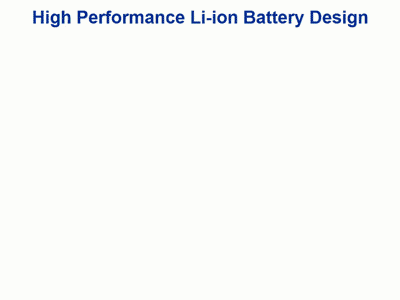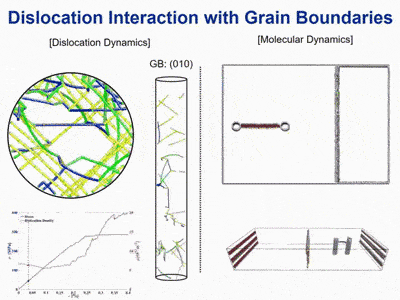Dislocation dynamics simulations in a confined volume

The dislocation dynamics simulations allow us to follow the evolution of dislocation structures in a reasonable spatial and temporal scale, compared to atomistic simulations and have been useful in finding new strengthening mechanisms in bulk metals. Furthermore, DD simulations have been used to interpret dislocation mechanisms at the small scale by incorporating image stress calculations. Recently, we implemented the Parallel Dislocation Simulator (ParaDiS) code, which was originally developed at the Lawrence Livermore National Laboratory (LLNL), on an efficient image stress calculation for the cylinder geometry. Using this newly developed code, we studied the collective dislocation behaviors in BCC/FCC metals in various loading condition.
Fracture in a Si anode in lithium ion batteries during lithiation

In the search for a lithium ion battery anode material with high charging capacity, silicon (Si) has received much attention due to its high theoretical charging capacity. However, Si undergoes a huge volume expansion upon lithiation (310% for full lithiation) due to the large amount of lithium that is inserted and extracted during cycling. To avoid mechanical failure due to these volume expansions, it has been suggested that various nanostructures be used as the anode material. There has recently been a strong push to find an optimal nanostructure that best resists fracture and thus exhibits improved cycling performance, thereby exhibiting good cycling performance. With the aid of the mechanical modeling, we could obtain insight that could resolve fracture problems associated with Si anodes in lithium ion battery.
Dislocation Interaction with Grain Boundaries

The research goal of this proposal is to attain fundamental knowledge of interaction of crystalline defects in hierarchical nanostructured metals. Specifically, we aim to correlate the atomistic interactions of dislocations and grain boundaries (GBs) and their effect on structure-property relationships of nanostructured metals with unique hierarchical structures.
